
The leopards of Xigera
Meet and get to know the leopards that are regularly seen on safari at Xigera.
16 Mar 2021
Meet and get to know the leopards that are regularly seen on safari at Xigera.
16 Mar 2021
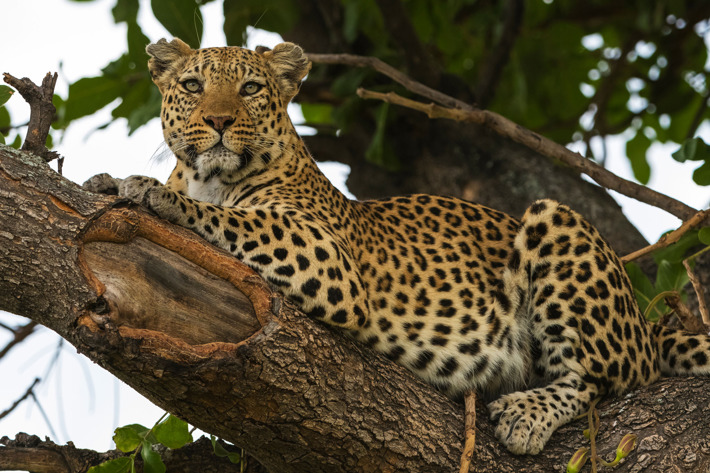
Only her ears gave her advanced age away. Mma Diphala, her name means essentially 'The one who preys on impala' was the original female who became relaxed with our game drive vehicles, so we were able to see her regularly. Part of her success was the fact that we did not have a lot of lions and hyena’s in the Xigera area at that time which is certainly no longer the case.
First seen around 2007 she has been a very successful mother who regularly had mostly female cubs in the central area of Xigera. In September, as the Sausage Trees lose their leaves and replace them within days, she would climb onto the low branches and wait for the impala to come underneath to feed on the fallen flowers. She would just drop straight out of the tree and kill one.
I last saw her in early April of 2020 and she was in fine condition, however, she wasn't seen again in our area. We will never know what happened to her and I miss her terribly, she was a spectacular leopard in every way.
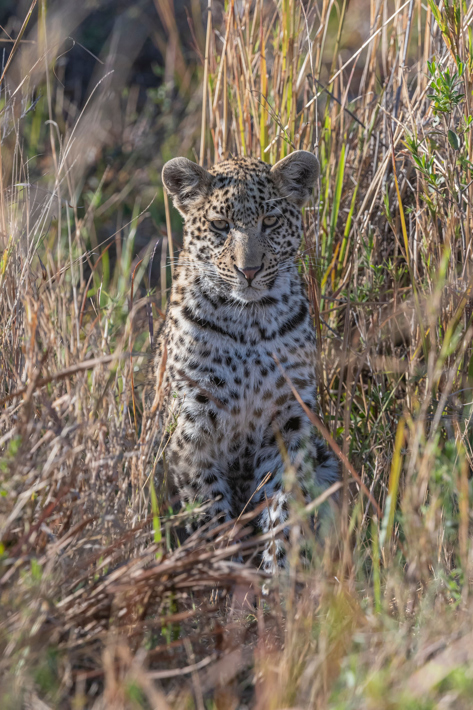
This was Madiphala’s firstborn cub as far as we know. I last saw her in Mma Diphala’s territory last year with two sub-adult cubs. We have not seen her regularly and that is likely because she has been in an area that we don’t get to on a regular basis. However, she is still relaxed whenever we do find her. I have some pictures of her sub-adult cubs but sadly not of her.
She is also the mother of Motalepula, who is our resident lodge leopard and is often seen crossing the bridge and into the island.
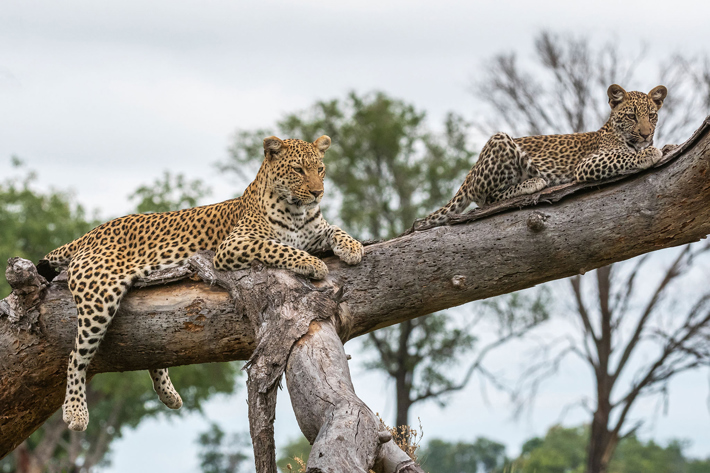
Sophie has the distinguishing mark of a row of spots in an 'S' starting above her right eye and ending on her right cheek. Her territory runs from the top of our area at Marula Island to the western edge near the old mokoro station. She is also with a cub aged about six months now. The cub is very happy with us viewing it and has provided us with some wonderful viewing opportunities over the last couple of months.
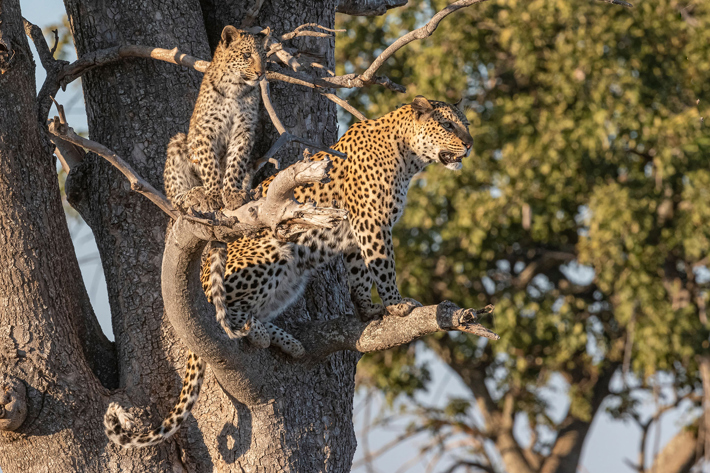
Our lodge leopard was first seen in February by our guides in our wettest month. Her name means, 'she who came with the rain.' She is a fabulous leopard with an amazing temperament and spends a lot of time close to the lodge. She lost cubs to baboons when she first starting breeding. Between Christmas and New Year of 2018/2019 she gave birth to two cubs, a male and female. The builders were on holiday at that stage and she promptly found a way into suite 2 and hid the cubs inside. Genious our guide heard a noise in the suite and investigated and was astounded to find the two cubs inside with their eyes still closed. Luckily about 10 days later she moved them out and it was not until early April that we found her with the cubs in good health. We still see both of them regularly and their mother is pregnant and hanging around the lodge, so we expect to see her new litter soon.
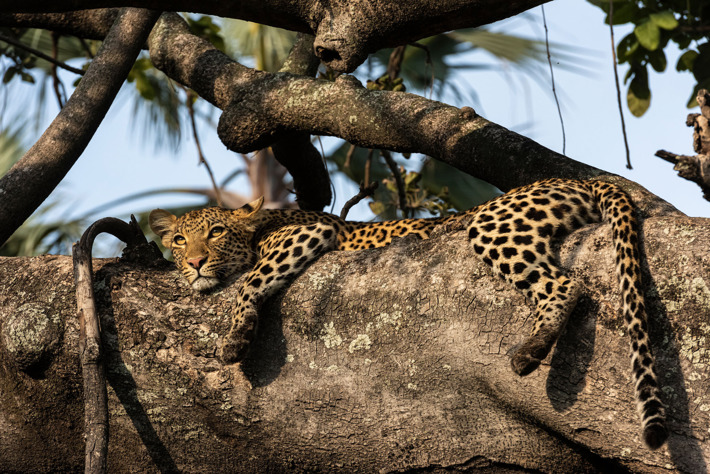
'The beloved one' is one of the second last pair of cubs born to Mma Diphala. They were both sub-adults when I first got to know them in 2018. I was lucky to get good images of the male cub before he was chased out of the area by the big resident male who is called Big Daddy. I think I have seen him twice since then but I cannot be certain.
Mma Orotwa has her territory to the south of Xigera Safari Lodge. We do see her from time to time and she is a fierce predator. She is beautifully marked and quite small. Even for her small size we have seen her on a Sitatunga kill which is a big animal for her to tackle. Towards the end of our build last year we found a three-month-old cub hiding near a Waterberry Tree close to the Lookout Deck. The following morning we saw its small tracks go out over the bridge.
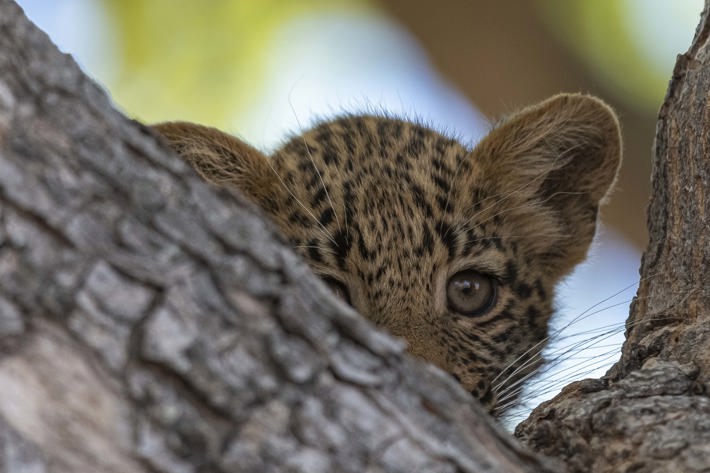
'The playful one' is the last-born cub to Mma Diphala and came as a surprise to us because of her mother’s age. She was quite shy in the beginning and then I found her three times in one day and she relaxed. She was always so much fun and very active whenever we saw her. She spent a lot of time close to the lodge after we lost her mother but she had to find her own territory and we have not seen her now for several months. She was quite young to have to fend for herself but she managed to pull through and was looking very fit the last time we saw her.
There are several other cubs in the area and we don’t see them all the time but, I would say at least three or four. By my count that is around 14 different leopards most of whom are relaxed and viewed easily from our game drive vehicles.